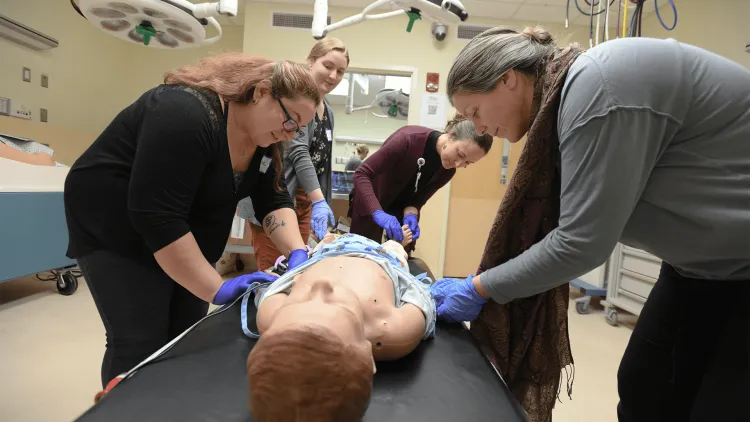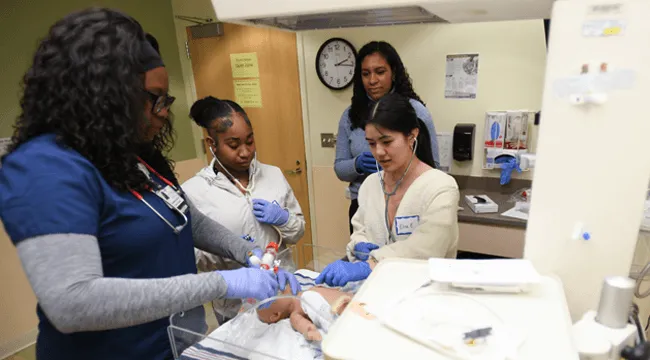The quantity of pediatric residency training programs and positions has increased during the past decade, yet the number of medical school graduates choosing to specialize in pediatrics has decreased, according to the Association of American Medical Colleges. Providing early exposure to the field of pediatrics can help to encourage future doctors to pursue careers in pediatric medicine and alleviate gaps in children’s access to health care, particularly in rural regions like northern New England.
That’s the reasoning behind Understanding Pathways to Pediatrics (UPP), an annual event hosted by Larner medical students and funded by the Department of Pediatrics. The one-day program gives undergraduate college students interested in exploring careers as health professionals a behind-the-scenes glimpse of medical school and the job of a pediatrician.
Kiana Heredia, M.D.’24, created UPP when she was a medical student at Larner with a goal to support people who feel doubtful about their ability to succeed in medical school. It was Heredia’s idea to target pre-medical students in the first years of their undergraduate experience, based on the apprehension she felt at that stage of her education about whether she had what it takes to pursue a career in medicine. Today, after graduating from Larner, Heredia is a pediatrics and adult/child psychiatry resident at Pittsburgh Children’s Hospital.
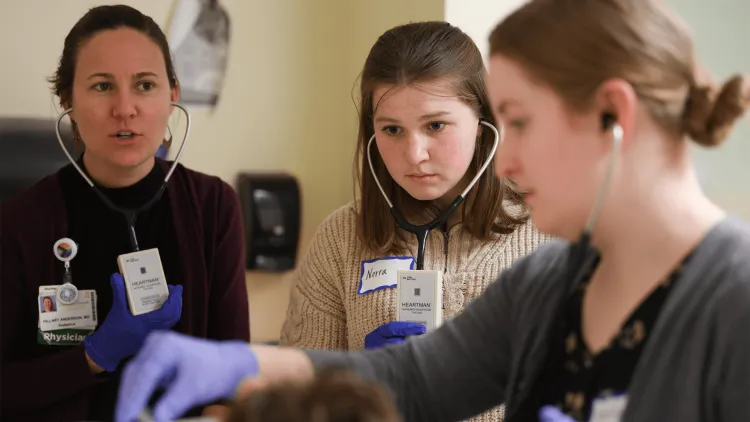
Held during the spring semester, the 2025 UPP event hosted bachelor’s degree students from colleges and universities across the northeastern U.S. The participants rotated through UVM’s Clinical Simulation Laboratory practicing clinical skills on manikins, including cutting an umbilical cord, performing a lumbar puncture, and treating a child in respiratory distress. They learned how to perform cardiopulmonary resuscitation and point-of-care ultrasound. A “Clinical Mystery Case” session led by Lewis First, M.D., M.S., professor and chair of pediatrics, challenged the students to work together to determine a child’s diagnosis.
During a health advocacy panel session, pediatrics faculty and medical students shared their personal career journeys. “Participants gain so much from hearing stories from those who are just a few steps further along on their journey and how they overcame various challenges to get where they are now,” said L. E. Faricy, M.D., associate professor of pediatrics and the faculty organizer for UPP.
“Being able to talk to current med students was a major help and answered all of my questions about medical school.” — 2025 Understanding Pathways to Pediatrics participant
Class of 2027 medical students Jeremiah Bates and Elizabeth Medve served as co-leaders of this spring’s event with support from their classmates. The medical students guided participants through clinical practice sessions, answered questions about the process of applying to medical school, and provided advice for pre-med coursework.
Bates felt inspired to lead the event after participating in it last year, because it “helped participants to feel less overwhelmed and intimidated by the med school process,” he says. “There are many learners out there of all ages and backgrounds that would love to pursue a career in medicine but need more resources and guidance on their journey.”
Early exposure to pediatrics during medical training can encourage students to choose child health care as their specialty, says Faricy. “Pediatrics isn’t always on people’s radar when they enter medical school, as they may not have had any exposure to it as a career option,” she says. “It is a career path that aligns very well with why people are often drawn to medicine in the first place—the desire to help people and cure or prevent illness through an understanding of science and human biology.”
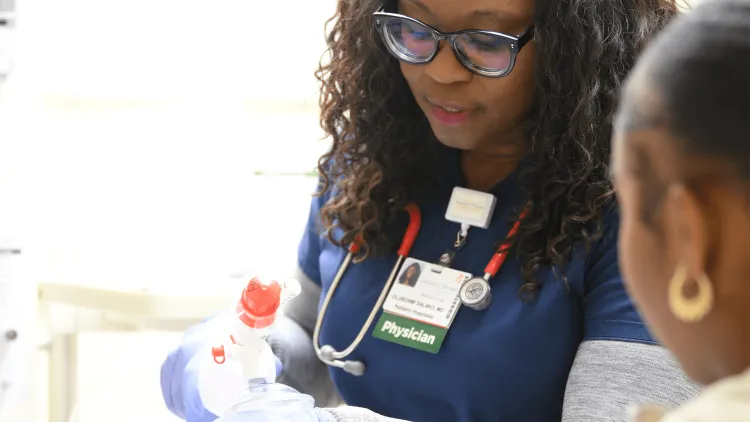
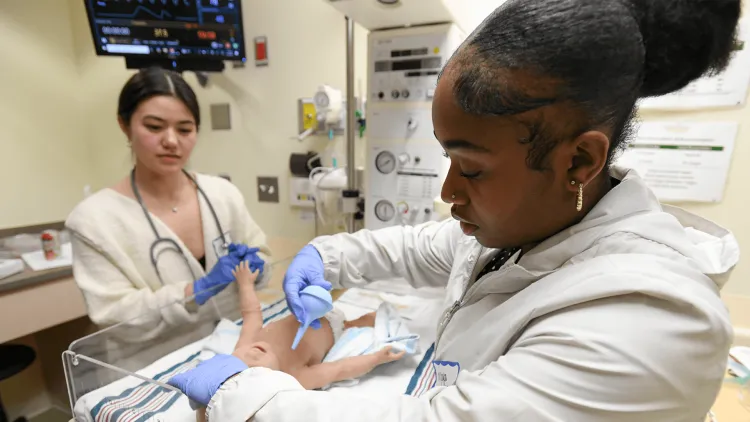
A post-event survey of 2025 UPP participants affirms the program’s value: One participant wrote, “Being able to talk to current med students was a major help and answered all of my questions about medical school.” Another participant chose their favorite activity as the infant clinical simulation case and wrote “I think I want to be a pediatric hospitalist!”
UPP also helps pre-medical students build relationships and connect with people they can relate to, says First. “The relationships established between these students and the faculty, residents, and medical students who provide the teaching and mentoring for our UPP events become long-lasting for many of the participants.”
In addition to fiscal and faculty support for UPP, the Department of Pediatrics offers Pathways in Pediatric Education, nicknamed “PATH,” a year-long preceptorship for interested pre-medical students to continue their engagement with pediatric faculty. PATH allows students to deepen their understanding of the field and build a mentoring relationship with a pediatrician preceptor.
